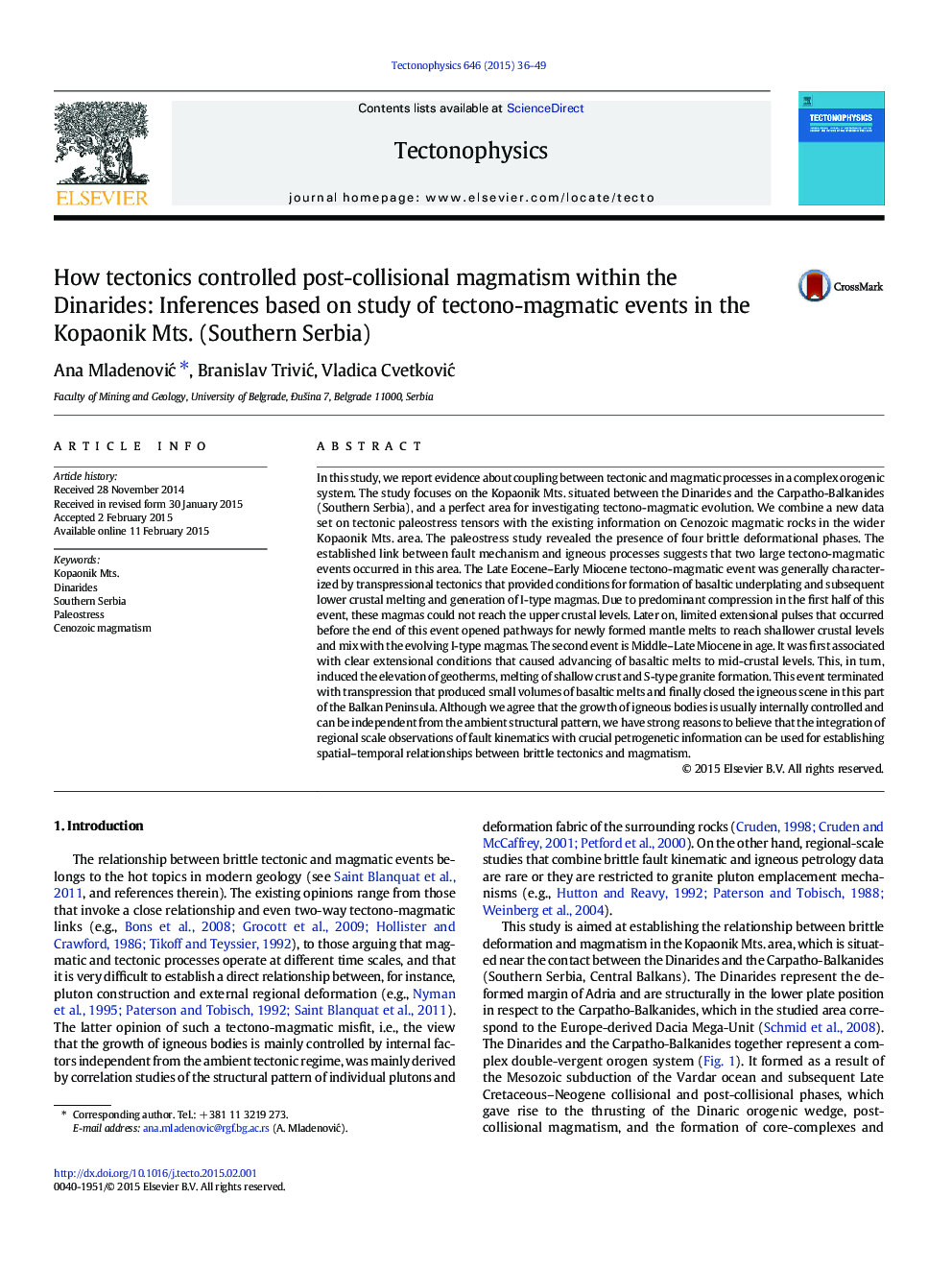| کد مقاله | کد نشریه | سال انتشار | مقاله انگلیسی | نسخه تمام متن |
|---|---|---|---|---|
| 4691717 | 1636747 | 2015 | 14 صفحه PDF | دانلود رایگان |
• Paleostress inversion applied to determine Cenozoic brittle tectonic history.
• New synthesis of Cenozoic igneous processes in Internal Dinarides reported.
• For the first time two tectono-magmatic events determined for the Kopaonik area.
In this study, we report evidence about coupling between tectonic and magmatic processes in a complex orogenic system. The study focuses on the Kopaonik Mts. situated between the Dinarides and the Carpatho-Balkanides (Southern Serbia), and a perfect area for investigating tectono-magmatic evolution. We combine a new data set on tectonic paleostress tensors with the existing information on Cenozoic magmatic rocks in the wider Kopaonik Mts. area. The paleostress study revealed the presence of four brittle deformational phases. The established link between fault mechanism and igneous processes suggests that two large tectono-magmatic events occurred in this area. The Late Eocene–Early Miocene tectono-magmatic event was generally characterized by transpressional tectonics that provided conditions for formation of basaltic underplating and subsequent lower crustal melting and generation of I-type magmas. Due to predominant compression in the first half of this event, these magmas could not reach the upper crustal levels. Later on, limited extensional pulses that occurred before the end of this event opened pathways for newly formed mantle melts to reach shallower crustal levels and mix with the evolving I-type magmas. The second event is Middle–Late Miocene in age. It was first associated with clear extensional conditions that caused advancing of basaltic melts to mid-crustal levels. This, in turn, induced the elevation of geotherms, melting of shallow crust and S-type granite formation. This event terminated with transpression that produced small volumes of basaltic melts and finally closed the igneous scene in this part of the Balkan Peninsula. Although we agree that the growth of igneous bodies is usually internally controlled and can be independent from the ambient structural pattern, we have strong reasons to believe that the integration of regional scale observations of fault kinematics with crucial petrogenetic information can be used for establishing spatial–temporal relationships between brittle tectonics and magmatism.
Journal: Tectonophysics - Volume 646, 4 April 2015, Pages 36–49
